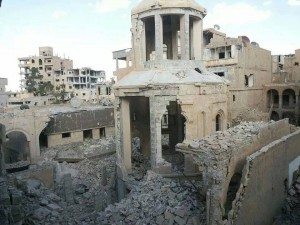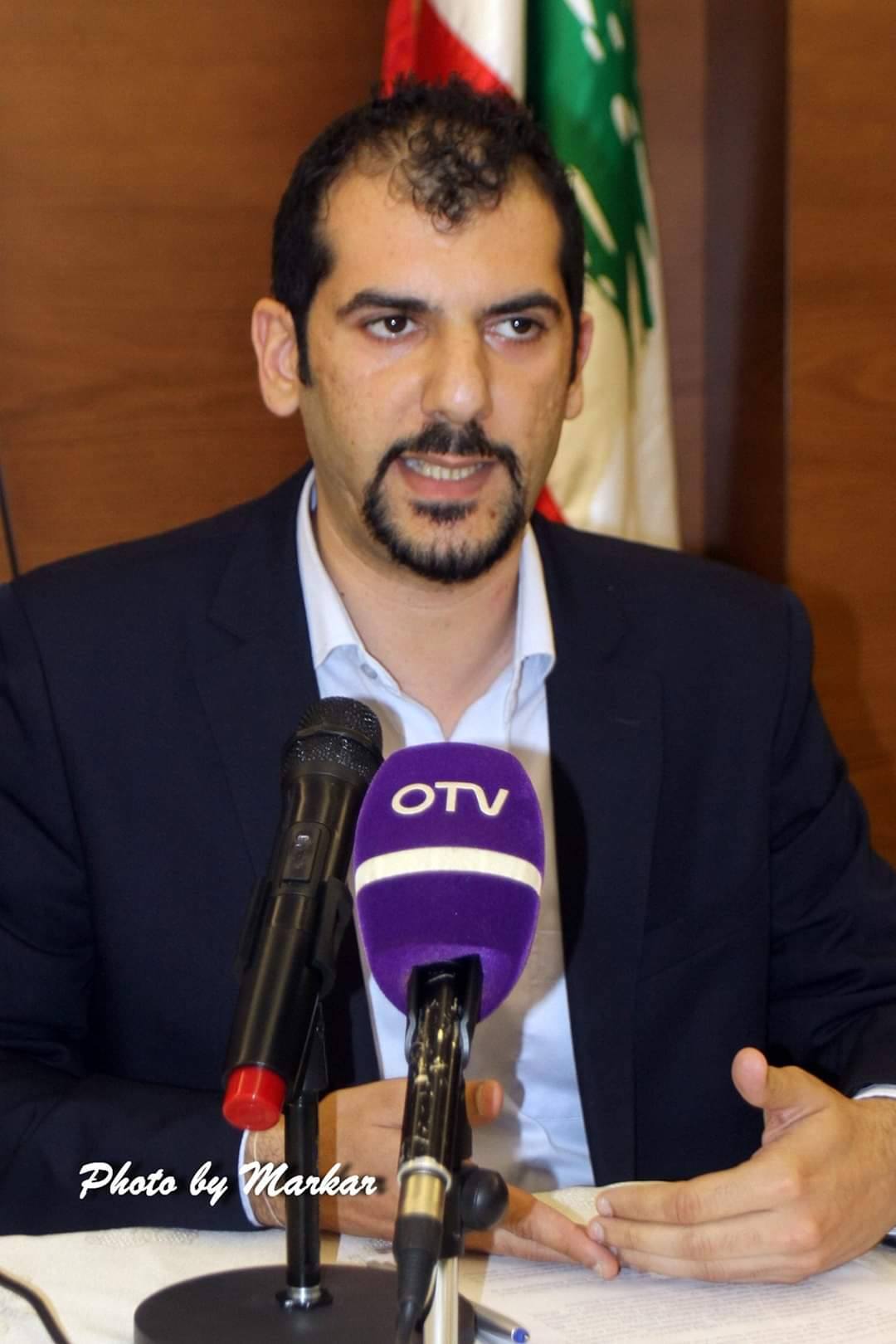The socio-economic crisis was one of the causes of the disintegration of centralized governments in Syria and Iraq in 2011 and the emergence of radical militants in rural areas. These militants were motivated by anger towards the urban elite, who for decades neglected rural areas. As civil wars and political instability hit Syria and Iraq, many young rural people were recruited by these groups, who were financed by regional countries or non-state actors. In 2013, the Islamic State of Iraq and Syria (ISIS) was founded with the aim to establish an Islamic kingdom (caliphate) in the region. ISIS was a transnational militant Islamist terrorist group that by 2014 had occupied huge areas in Iraq and Syria and declared its “Islamic Caliphate.” Its militants were responsible for the Yezidi genocide that took place in August 2014 in Northern Iraq and the killing and deportation of thousands of Christians and Muslims. After the dissolution of ISIS in late 2019, the movement went underground, yet today it is taking advantage of the financial crisis in Syria and making a comeback.
The emergence of ISIS was one of the main reasons that Russia directly intervened in the Syrian conflict. As many ISIS recruits were from the North Caucasus, Russia was concerned about the return of radical militants to the Caucasus. Iran had similar concerns then about the expansion of ISIS to its borders and created pro-Iranian militias to fight these terrorist groups. Meanwhile Turkey, taking advantage of the battles between ISIS and Kurdish militants in Northern Syria, pushed its military expansion to contain and prevent the establishment of any Kurdish political entity near its southern border. What could happen to the region if ISIS re-emerges, and what will be its impact on developments in the South Caucasus?
Socio-Economic Crisis in Syria
According to Syrian political economy expert Joseph Daher, the “currency devaluation and inflation in Syria have triggered a devastating cost of living crisis.” Faced with severe inflation, the Syrian Central Bank devalued the official exchange rate in July for the third time in 2023, from 6,532 Syrian lira to 8,542 Syrian lira to the USD. In the black market, it is traded for 13,000 Syrian lira. This depreciation caused panic in local markets, with rising prices forcing many shops to close to prevent further losses.
This economic crisis has not just hit the government-controlled areas. A similar crisis is unfolding under the Kurdish and rebel-held zones. In the northeast, the Kurdish-controlled Autonomous Administration announced that by the end of July, it will pay the salaries of its employees according to the USD exchange rate. In the northwest, the “Syrian Salvation Government,” which is controlled by Hayaat Tahrir al-Sham (former Jubhat al Nusra/al Qaida), has permitted the use of USD in trade, as the Turkish lira, which was previously used as the main currency for trade, is facing a new collapse.
Observers and local analysts argue that this may trigger a new wave of the emergence of terrorist movements, drawing in young people frustrated by the crisis.

Is ISIS Making a Comeback?
A few weeks ago, I met an old friend who is a Kurdish official from the Patriotic Union of Kurdistan party (PUK) based in Sulaymaniyah in northern Iraq. The official said that in recent months there have been very active ISIS activities in Iraq near the Syrian border. Civilians are forbidden from visiting certain zones in Iraq due to security concerns. On the other hand, pro-Iranian militias are refusing to merge with the army, creating parallel security institutions. The inability to merge all the remaining militias within the army is hindering the establishment of a strong and centralized security institution to contain the emergence of terrorist groups. Furthermore, underground militant groups affiliated with ISIS may reemerge, as they are profiting from illegal smuggling near the Iraqi-Syrian border.
Despite the fact that in March 2019, ISIS lost the last territory it held in Syria to the Kurdish fighters allied with the U.S., sleeper cells continue to carry out deadly attacks against both Kurdish fighters and government forces. These cells are active in the desert province of Deir ez Zor bordering Iraq. The province is divided into two zones: the northern zone is administered by the Kurds with the presence of U.S. troops, while the southern zone is governed by the Syrian government and the presence of Russian soldiers and Iranian-affiliated fighters.
On August 11, ISIS militants ambushed a bus carrying Syrian soldiers in the above-mentioned desert province, killing at least 20 and wounding others. The group named Abu Hafs al-Hashimi al-Qurashi as its new leader this month. Abu Hafs al Hashimi is a militant and the fifth and current caliph of ISIS. He was named as caliph on August 3, 2023, in an audio message by the spokesperson of ISIS, Abu Huthaifa al-Ansari. The announcement came four months after the killing of his predecessor Abu al-Hussein al-Husseini al-Qurashi in northwestern Syria by fighters loyal to Turkey. Little is known about Abu Hafs al Hashimi, but Western media reports have mentioned that he played a key role in the Yezidi genocide and spent time in a U.S.-run prison, while Syrian media say that he is local from Deir ez Zor desert, where local Sunni tribes live.
ISIS has also intensified its activities by freeing ISIS members from jail and forming contacts with ideologically similar movements such as the “Guardians of Religion,” who have their stronghold in the mountains of Idlib bordering Turkey.
The Political and Regional/International Implications of ISIS’s Revival
The political situation in Syria is also feeding the re-emergence of ISIS. Politically, Syria is becoming a new battleground between Russia and the U.S. Moscow is concerned that the U.S. may open a new front in Syria against Russia to deviate the Kremlin’s military attention from Ukraine. On the other hand, according to political analyst Maria Maalouf, there is a growing political consensus in Washington that “Russia and Iran are aiming to kick the U.S. troops from Syria”. In June 2023, the Washington Post published a “leaked classified intelligence document” according to which “Iran and its allies are building and training forces to use more powerful armor-piercing roadside bombs intended specifically to target U.S. military vehicles and kill U.S. personnel” in Syria.
At present, the strategic military balance in Syria between the U.S. and Russia favors Moscow. The number of American troops there is around 900, most of whom are contractors, while Russia has at least 6,000 soldiers, including Wagner fighters. Russia and Iran (through its militias such as Hezbollah) control vast areas of Syria, which they administer jointly with the Syrian government. Meanwhile, the U.S. operates in northeastern Syria under the Kurdish administration, and Turkey operates in northwestern Syria, mainly in Idlib.
Iranians and Russians have concerns about the presence of the U.S. troops not just for geopolitical but also for geo-economic reasons. During my visit to the St. Petersburg International Economic Forum, many Iranian experts raised concerns that one of the key obstacles to linking the Levant to the International North-South Transport Corridor (INSTC) is the presence of U.S. troops and their control of key strategic roads connecting Iraq to Syria. For Iran, connecting Tehran to Baghdad and then to Damascus via future railways requires the removal of U.S. troops so that Iran and Russia can have highway access to the Eastern Mediterranean.
By connecting key players in a geopolitically and geo-economically strategic region, the Russian-backed INSTC and the Iranian-backed Tehran-Baghdad-Damascus railway have the potential to promote regional interconnectivity and defuse political tensions between regional states. The recent Iranian-Saudi and Syrian-Saudi rapprochement and negotiations show that the region is heading towards a “shy” collaborative mood, actively seeking economic development and openness instead of conflict.
In the meantime, conflicts between the Kurds and the Turkish army could jeopardize stability. Recently, the Turkish army has escalated its military operations against Kurdish militias (mainly YPG in northeastern Syria and PKK in northern Iraq). According to the Armed Conflict Location and Event Data Project, there have been more than 665 Turkish airstrikes and drone strikes in northern Iraq and Syria in the first half of 2023. Most of these targets were Kurdish officials and fighters.
It is important for the U.S. to de-escalate tensions between the Kurds and the Turks and cut the road that connects the Syrian-Iraqi border where Iranian militias are in control.
Impact on South Caucasus
The socio-economic situation and the political atmosphere in Syria and Iraq can create the grounds for the re-emergence of ISIS and radical groups to launch attacks against government positions. These groups can also be used by international and regional actors to push their agendas and contain their rivals. Turkey’s intensified attacks against the Kurds could give a green light to Russia and Iran to minimize U.S. influence in northeastern Syria. Amid this complex situation, another volatile region may be affected by instability in Syria – the South Caucasus.
A new wave of terrorism and instability in Syria will have repercussions in the South Caucasus, where the possibility of a new round of clashes around Artsakh between Armenia and Azerbaijan increases amid Azerbaijan’s ongoing blockade of the Berdzor (Lachin) Corridor and the humanitarian catastrophe in Artsakh. Baku may take advantage of the new developments in Syria and the shift of attention of the regional actors Russia, Turkey and Iran from the South Caucasus to launch a new escalation.



Think how much trouble the world could’ve avoided had the US not invaded Iraq.